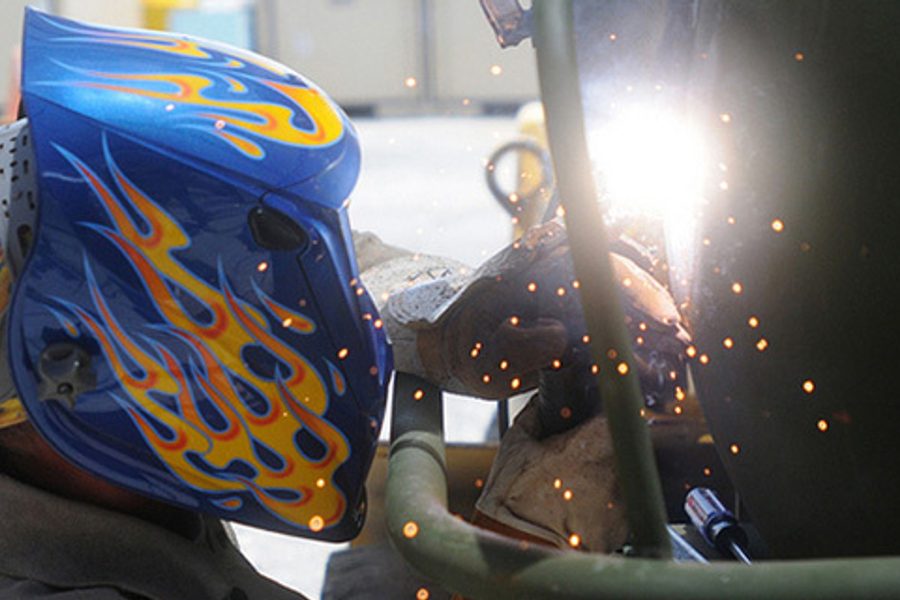
Over the last few years, the media has blared warnings that a “skills gap” among American workers is preventing full economic recovery.
According to this narrative, the problem is not an inadequate supply of family-sustaining jobs; it’s a workforce lacking in skills, training and education. The skills gap thesis has been spread by influential pundits like the New York Times’ Thomas Friedman, top CEOs like Caterpillar’s Doug Oberhelman, and PIMCO hedge fund owner Bill Gross, who declared, “Our labor force is too expensive and poorly educated for today’s marketplace.”
In my home state of Wisconsin, the Milwaukee Journal Sentinel has repeatedly given lavish coverage to a November 2011 comment by Tim Sullivan, former CEO of Bucyrus International and special advisor to Gov. Scott Walker on workforce development: “We don’t have a jobs crisis in Milwaukee, we have an education crisis.”
But in a study released this week called “The Skills Gap and Unemployment in Wisconsin: Separating Fact From Fiction,” urbanologist Marc Levine, a professor of history and economic development at the University of Wisconsin-Milwaukee, applies a data-laden sledgehammer to this notion. And while Levine’s report focused primarily on Wisconsin, his critique of the “skills gap” notion has national implications.
Levine’s report decimates the skills gap thesis one point at a time:
- False: The skills of the workforce somehow dropped sharply between 2007 and 2009. Numerous studies by Nobel laureates, highly regarded economics institutes, and two former chairs of presidential councils of economic advisers all conclude that a sudden dropoff in workers’ skills over two years is utterly implausible as an explanation for massive unemployment. In the words of economist Heidi Shierholz of the Economic Policy Institute, “It is not the right workers we are lacking, it is work.”
- False: There is a vast pool of high-skilled jobs waiting to be filled. As Levine commented in the report, “Even if every unemployed person were perfectly matched to existing jobs, over 2/3 of all jobless would still be out of work.”
- False: Employers are trying in vain to attract skilled workers. If a “skills shortage” truly existed, employers would raise wages to attract workers with the special skills they seek. Instead, wages have fallen in Wisconsin since 2000, including in occupations like welding, where there is a supposed shortage of workers, Levine pointed out.
- False: Understaffed employers must make do with the skilled workers they have. A shortage of sought-after workers would lead employers to increase these workers’ hours. However, the report says, “average weekly hours worked in manufacturing have remained unchanged since 2000, while the average weekly overtime hours have actually declined by 12.8 percent since 2000.”
- False: New high-skill jobs have been created. Overall, Wisconsin retains a jobs deficit of 243,000, based on job losses since the Great Recession plus new positions needed for entrants into the labor market, according to a study by the Center on Wisconsin Strategy. Though Scott Walker came into office in 2011 famously promising the creation of 250,000 jobs during his four-year term, Wisconsin has ranked 42nd in job creation out of the 50 states.
- False: Workers with advanced degrees are more highly sought-after. A pervasive skills gap would raise the demand for workers with higher skills, measured in indicators like college degrees. Instead, the percentage of college-educated workers in jobs where they are obviously overqualified — as bartenders and retail clerks, for example — has risen sharply. “College graduates comprise 25% of retail salespersons and 21.6% of bartenders in the Milwaukee metro area — both jobs classified as requiring less than a high school diploma,” the report reads.
- False: The American job market will increasingly demand higher-skilled workers. Forecasts of future workforce needs show not an increased demand for high education and skills, but for occupations that require a high school degree or less, according to the report: “Of the 25 jobs projected by the Wisconsin Dept. of Workforce Development to provide the largest number of job openings in the state between 2010-2020, 22 of them require a high school degree or less and almost all require short-term, on-the-job training.”
Speaking with Working In These Times, Levine blasted media like the Journal Sentinel for recklessly spreading the “skills gap” myth. “They’ve relied on anecdotes and claims by CEOs that simply don’t measure up to reality,” says Levine. “There are still three unemployed people for every possible job opening.”
Adding injury to insult, the purveyors of the skills gap myth don’t just sidestep corporate responsibility for the shortage of well-paying jobs; they use the alleged deficiency in the workforce to justify shifting jobs out of Wisconsin.
In 2008, while still CEO of Bucyrus International (now part of Caterpillar), Tim Sullivan — Wisconsin’s leading alarmist on the skills gap — decried a shortage of “qualified, factory-grade” welders in Milwaukee. Sullivan proceeded to move about 80 welding jobs to Kilgore, Texas.
However, Sullivan’s rationale doesn’t hold up under scrutiny. To quote the report, “Around the time Bucyrus was opening its Kilgore plant, there were 635 unemployed welders in metro Milwaukee, and 1,935 unemployed welders in Wisconsin.” The real attraction of Kilgore was likely not skills, but savings: Workers in Kilgore make lower salaries — 31 percent of welders make less than $25,000, compared to only 22 percent in Milwaukee — and, very significantly, are not unionized.
“The people pushing the skills gap have an agenda that they are not talking about publicly,” Levine told Working In These Times, “and that agenda focuses on keeping wages low and having non-union workers.”
Pundits’ and CEOs’ unfiltered claims create a comforting explanation for the still-widespread unemployment long after the Great Recession has supposedly ended, says Levine.
“There’s a strong ideological component behind the skills gap trope,” Levine says. “It diverts attention (and policies) from the deep inequalities and market fundamentalism that created the unemployment crisis.”
Or, as he writes in his report: “The problem isn’t a malfunctioning ‘talent pipeline.’ The problem is a sputtering job-creation machine, in both the quantity and quality of jobs created.”

I hope you found this article important. Before you leave, I want to ask you to consider supporting our work with a donation. In These Times needs readers like you to help sustain our mission. We don’t depend on—or want—corporate advertising or deep-pocketed billionaires to fund our journalism. We’re supported by you, the reader, so we can focus on covering the issues that matter most to the progressive movement without fear or compromise.
Our work isn’t hidden behind a paywall because of people like you who support our journalism. We want to keep it that way. If you value the work we do and the movements we cover, please consider donating to In These Times.







